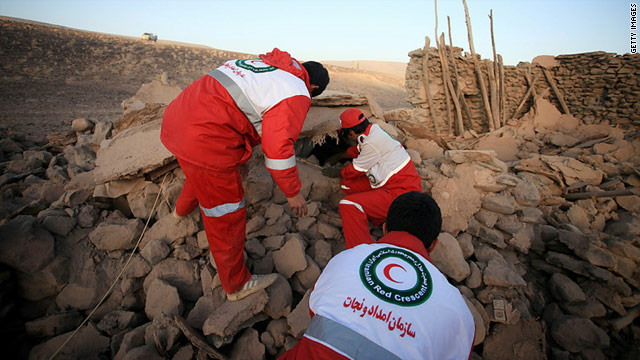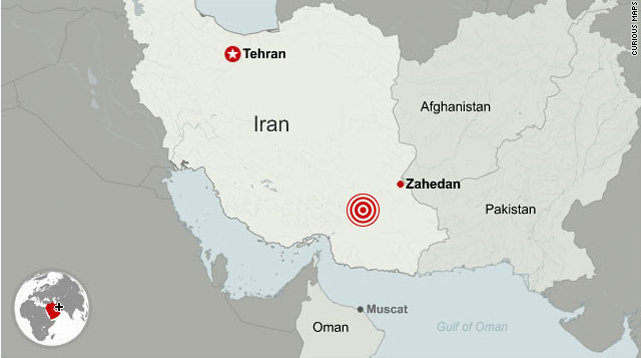
Felt as far away as the Pakistan-Afghanistan border, the quake was particularly strong between the cities of Zahedan and Bam. It struck late at night and hardest in mostly rural, relatively sparsely populated areas of Kerman province, officials said. "Considering the dimensions of the damage, the death toll is expected to rise," the governor general of Kerman was quoted as saying by the IRNA news agency.
Citing eyewitnesses, another state-run news agency IRNA reported that scores of people are trapped in debris of buildings that have been destroyed. Many such sites are in hard-to-reach locations, making any rescue operations even more difficult. Additionally, at least seven aftershocks struck in the four hours since the 6.5-magnitude quake hit at 10:12 p.m. Monday night, according to the Iranian Seismological Center, based at the University of Tehran, and the U.S. Geological Survey.
Javad Kamali, a deputy governor for Kerman province, told the IRNA that the tremor knocked down phone lines throughout the region. Military and law enforcement workers could communicate only using wireless technology, he added. Relief and recovery teams, some from outside the area, have converged around the village of Hosseinabad, between the towns of Fahraj and Rigan, Kamali said.
In addition, IRNA reported that Kerman province's disaster council convened an emergency meeting to assess possible damage and coordinate potential aid and assistance efforts. The tremor was centered in Kerman province about 16 kilometers (9 miles) southwest of Hosein Abab, 213 kilometers (132 miles) southwest of Zahedan and about 1,075 kilometers (668 miles) south of Tehran. Residents of Zahedan, Khash and Iranshahr in Sistan-Baluchestan province, which borders Afghanistan and Pakistan, all felt the quake, the semi-official Fars News Agency reported.
Kerman Gov. Esmail Najjar told IRNA that although the earthquake's reach was significant, it hit several small villages hardest. The high-impact zone's population -- which Najjar estimated at between 5,000 and 6,000 people -- was widely dispersed. Iran lies on a series of seismic fault lines and experiences earthquakes almost daily. At times, they have had devastating consequences. Among the most notable was in December 2003, when a 6.6-magnitude quake devastated the ancient city of Bam -- also in southeast Iran -- and killed at least 30,000 people.
Last year, an earthquake struck Hormozgan province in southern Iran, injuring about 700 people in the port city of Bandar Abbas, state media reported. And there's been plenty of activity in recent months as well. In early November, a 4.9-magnitude earthquake in the northwestern Lorestan province injured at least 80 people, according to IRNA. One person died two months earlier when a quake measuring magnitude-5.5 struck southern Iran, and in August three were killed after a 5.7-magnitude tremor in northern Iran, several state news agencies reported.




Reader Comments
to our Newsletter